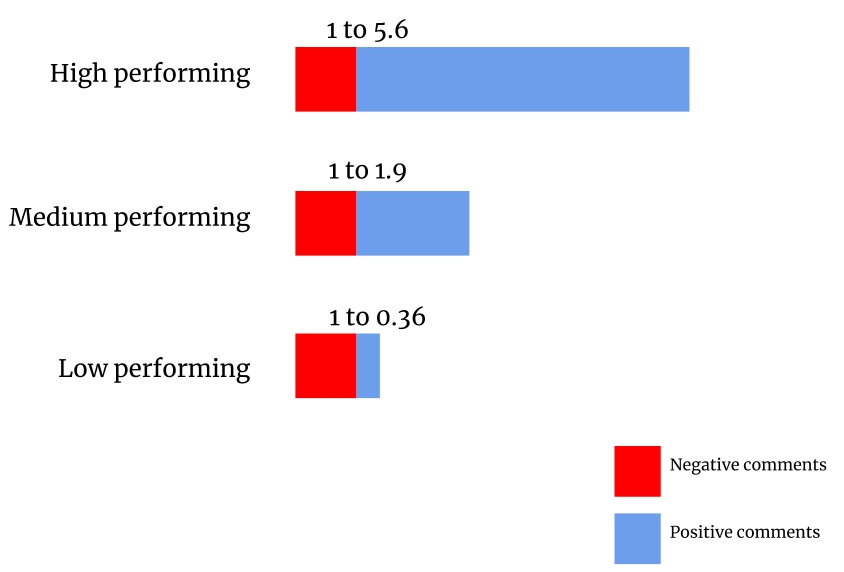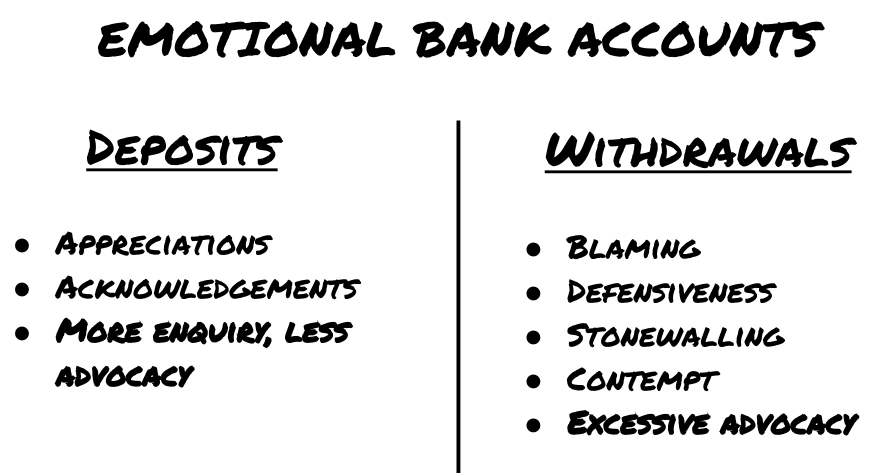There has been plenty of research carried out on how positivity affects teamwork. Since the 1970s Dr John M. Gottman (https://www.gottman.com/about/research/couples/) has been studying one of the smallest, most ubiquitous of teams - married couples. In a series of interviews, he tested each couple by asking them to fix an area of conflict in their relationship within 15 minutes. He then observed the couple's interactions.
His critical observation was that those who were able to resolve their conflict had a high degree of positivity in their conversation. He went on to predict, with a high degree of accuracy, which couples would stand the test of time and which would not.
He found that relationships that were likely to survive longer had between a 2:1 to 5:1 ratio of positive to negative comments when they conversed with each other.
Losada and Heaphy, in their 2004 paper (The Role of Positivity and Connectivity in the Performance of Business Teams: A Nonlinear Dynamics Model, Marcial Losada, Emily Heaphy, American Behavioral Scientist, Vol 47, Issue 6, pp. 740 - 765) extend both Gottman's and Losada's earlier research. They studied positivity and how it affected team dynamics at various companies and organizations.
Their work involved looking at teams, judging their effectiveness on financial performance, customer satisfaction ratings, and 360-degree feedback ratings of the team members.
Their study showed that similarly to Gottman's research on human relationships, the positivity ratio affected teams in the following way:
- High-performing teams had a 5.6:1 ratio positive to negative comments, that is, for every negative comment they made five positive comments
- Medium-performing teams had a 1.9:1 ratio positive to negative comments
- Low-performing teams had a ratio of 0.36:1 positive to negative comments in their conversation, that is, for every positive comment, they made two to three negative comments:

One key aspect of positivity is the broaden-and-build theory put forward by Barbara L. Fredrickson. Her paper - Fredrickson, B. L. (2001). The Role of Positive Emotions in Positive Psychology: The Broaden-and-Build Theory of Positive Emotions. The American Psychologist, 56(3), 218–226 - supports the idea that human behavior can be more flexible and creative when framed with positive emotions.
Extensive research work carried out by Fredrickson shows that individuals are more able to learn new skills and be open to new ideas when we're in a positive state of mind. This only further supports the concept of psychological safety (see the section on psychological safety earlier in this chapter) being key to the collaborative and creative teamwork needed to solve complex problems.
In his book, 7 Habits of Highly Effective People, Dr. Stephen R. Covey suggests our relationships operate like transactions in a bank account. In this instance, it is an Emotional Bank Account. Instead of crediting or debiting cash from our balance, we're making emotional deposits and withdrawals.
Here are some examples of deposits and withdrawals:

How do we integrate this? We'll need to keep in mind the following:
- What is our team's positive/negative ratio? How do they interact with each other, are they emotionally withdrawing from the conversation or are they constructive in their interactions?
- When are your teams engaged in a conflict which is toxic? If the team is falling into destructive behavior, what is the pattern? Can we help them identify it so they can avoid it when we aren't around?
- Get curious, ask open/neutral questions, listen to the other person's perspective and integrate it into our understanding. This will ultimately create better solutions.
- Encourage our team to use the yes and rule of improvisational comedy. See the suggested activities in the previous section Forming.
